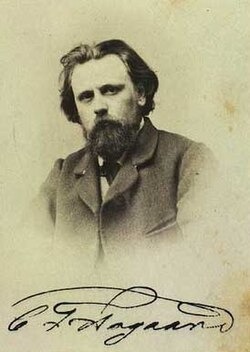

Carl Frederik Aagaard
DK
64
Artworks
1833 - 1895
Lifespan
Artist Biography
Carl Frederik Peder Aagaard (1833–1895) was a distinguished Danish painter, renowned for his evocative landscape paintings and his significant contributions to decorative art. Born in Odense, Denmark, Aagaard emerged during the latter part of the Danish Golden Age, a period of extraordinary artistic and cultural flourishing. Though he began his career as this era waned, he was profoundly influenced by its luminaries and trained under some of its great masters. His work, characterized by a keen observation of nature and a meticulous attention to detail, captured the unique atmosphere of Danish landscapes and picturesque scenes from his travels, leaving an indelible mark on 19th-century Danish art.
Born on January 29, 1833, Carl Frederik Aagaard was the son of a shoemaker. His initial artistic inclinations led him to take his first painting lessons in his hometown of Odense. However, aspiring to refine his skills and immerse himself in a more dynamic artistic environment, Aagaard moved to Copenhagen in 1852 at the age of nineteen. In the capital, he joined his elder brother, Johan Aagaard, who was an established woodcutter and engraver. Under Johan's guidance, Carl studied drawing on wood and etching. Concurrently, he sought formal education by taking classes at the Royal Danish Academy of Fine Arts and delved into decorative painting under the tutelage of Georg Hilker, a prominent figure in the field. This period was crucial for Aagaard, providing him with a diverse set of foundational skills that would inform his later career.
Aagaard's early professional years were marked by significant work in decorative painting. He collaborated extensively with Georg Hilker on several prestigious projects, including the decoration of the entrance hall at the Royal Veterinary and Agricultural University, a work that has since been carefully restored. He also partnered with the painter Heinrich Hansen to create decorative borders for Wilhelm Marstrand's works in the chapel at Roskilde Cathedral. Independently, Aagaard undertook decorative commissions for notable venues such as Frijsenborg Castle, the Dagmar Theater, and the National Scala. Despite his success in decorative arts, Aagaard's passion increasingly gravitated towards landscape painting. This shift was significantly encouraged and guided by his studies with the preeminent landscape painter P.C. Skovgaard, whose influence was pivotal in shaping Aagaard's artistic direction and style.
Aagaard made his debut as a landscape painter in 1857, exhibiting his work for the first time to considerable acclaim and earning the Neuhausenske Prize. This early success solidified his position within the Danish art scene. His reputation continued to grow, and in 1865, he became the first recipient of the Sødringske Opmuntrings Prize for landscape painters. This honor was awarded for his masterful painting, "An Autumn Morning at Jægersborg Dyrehave," a piece celebrated for its atmospheric depth and lyrical depiction of the Danish countryside, which was subsequently acquired by the National Gallery of Denmark. Seeking to broaden his artistic horizons and gather new inspiration, Aagaard undertook extensive study tours during the 1870s, making two prolonged trips to Italy and also visiting Switzerland. These travels provided him with a wealth of sketches and experiences that he later translated into compelling studio paintings, often focusing on picturesque, tourist-frequented spots, further perfecting his style.
In 1858, Carl Frederik Aagaard married Anna Pio, the posthumously born daughter of violinist Pierre Theodore Pio. His contributions to Danish art earned him significant recognition throughout his career. In 1874, he was elected a member of the Royal Danish Academy of Fine Arts, a testament to his standing among his peers. Five years later, in 1879, he was appointed a Knight of the Order of the Dannebrog, a prestigious royal honor. His career culminated in 1892 when he was awarded the title of Professor. Aagaard passed away in Copenhagen on November 2, 1895. Beyond his artistic achievements, his legacy also includes his unique home, designed by the renowned architect Vilhelm Dahlerup. The house was notably constructed using stones salvaged from the original Royal Danish Theater, which had been demolished in the 1870s. This historically significant residence was declared a cultural monument in 1977, preserving a tangible link to the artist's life and times.
Carl Frederik Aagaard's artistic style is characterized by its romantic yet realistic depiction of nature. Influenced by Skovgaard and the traditions of the Danish Golden Age, he excelled at capturing the specific light and atmosphere of the Danish landscape, with a particular fondness for forest scenes and coastal views. His paintings often feature meticulous detailing, especially in rendering foliage, water, and cloud formations, sometimes described as almost meteorological portraits. While his earlier works reflect a strong national romantic sentiment, his later paintings, informed by his travels, show an expanded palette and a broader range of subjects, including Italian and Swiss vistas. Many of his works focused on locations popular with tourists, demonstrating an awareness of the burgeoning travel culture of the 19th century. Aagaard's dedication to both grand decorative schemes and intimate landscape studies secured his place as a versatile and respected figure in Danish art history, whose works continue to be appreciated for their beauty and technical skill.